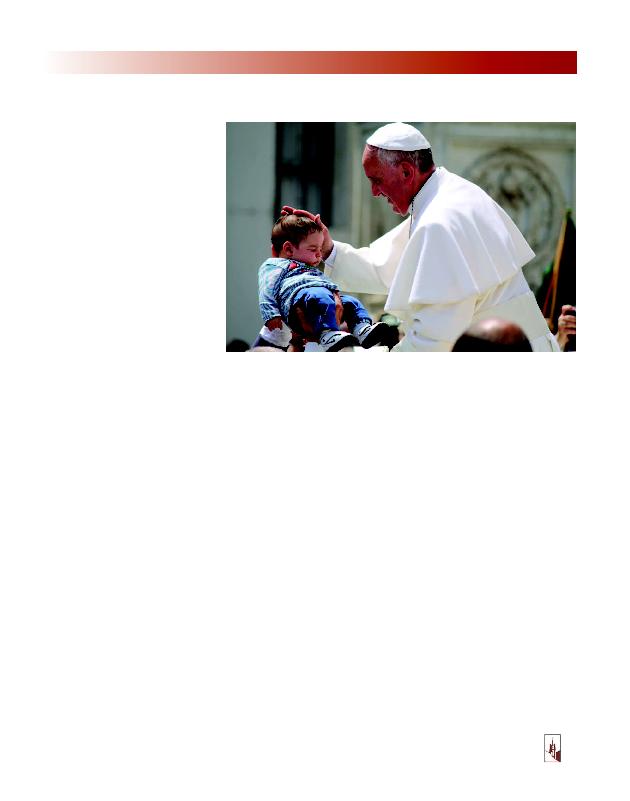
Saint Peter's Square on a rainy
evening, the white smoke was fol-
papam ... Franciscus" (We have a Pope,
Francis). As the network announcers
scrambled to find out something about
the Argentinian Cardinal Jorge Mario
Bergoglio, S.J., who had just been elected
pope, most of the world wondered:
choice of the name Francis?
emerged on the balcony in his unadorned
white cassock and said, "Brothers and sis-
ters, good evening. You know that the task
of the conclave was to give Rome a bishop.
It seems my brother cardinals went to the
end of the earth to find one."
cese, to bless him as the one who was
called to "preside in charity over all the
churches."
served and analyzed as if to better under-
stand, in a concrete and practical way,
Francis of Assisi's admonition that the
brothers "preach by their deeds" (Earlier
Rule, XVII.3).
on the balcony. He returned to his hotel
to pay his bill and personally thanked
those who had cared for him. Within a
few days, he washed the feet of incarcer-
ated young adult men and women --
Christian and Muslim -- at a Holy Thurs-
day service. He warmly embraced a se-
verely crippled adult on the edge of the
crowd and, to the delight of everyone in
the square, reached out to grab a jersey
from the Argentine soccer team he had
personally supported. Again:
and concern for the poor and the margin-
tion with the universally admired, but not
easily imitated, Francis of Assisi, seemed al-
most obvious.
the approval of the Bishop of Rome in
1209 to live according to the "form of the
Holy Gospel" (Test. 14).
the truth of the Gospel, and confronted
the discord and disorder they encoun-
tered in their medieval world, Francis and
his companions articulated a new form of
religious life, which was formally ap-
proved by Pope Honorius III in 1223.
was as if the Lord had given Francis of As-
sisi as a "light [=truth] for believers," so
that "by bearing witness to the [truth] he
might prepare a way of [truth] and peace
to the hearts of the faithful" (LM, prol. 2).
world.
looked down upon" (ER, IX.1) have raised
up questions among men and women
across the globe who wonder:
"this way"?
him?
questions such as these raise even deeper
questions and are, in fact, a first procla-
mation of the Gospel -- evangelization.
choices, brotherly love of all persons and
creatures, and steadfastness in his com-
mitment to the Gospel way, proposed an
alternative pathway to peace. In a similar
way, Pope Francis' choices have given the
world a glimpse of an alternative vision of
what it means to be Catholic -- the People
of God -- in the early years of the 21st
century.
church, it is hoped that he, too, in his own
way, might provide a way of light and
peace in a divided and discordant world.
May he continue to, in the words of Francis
of Assisi, "preach by [his] deeds."
2